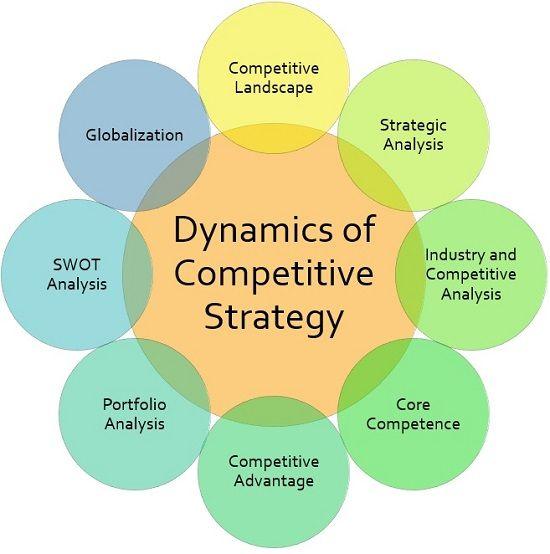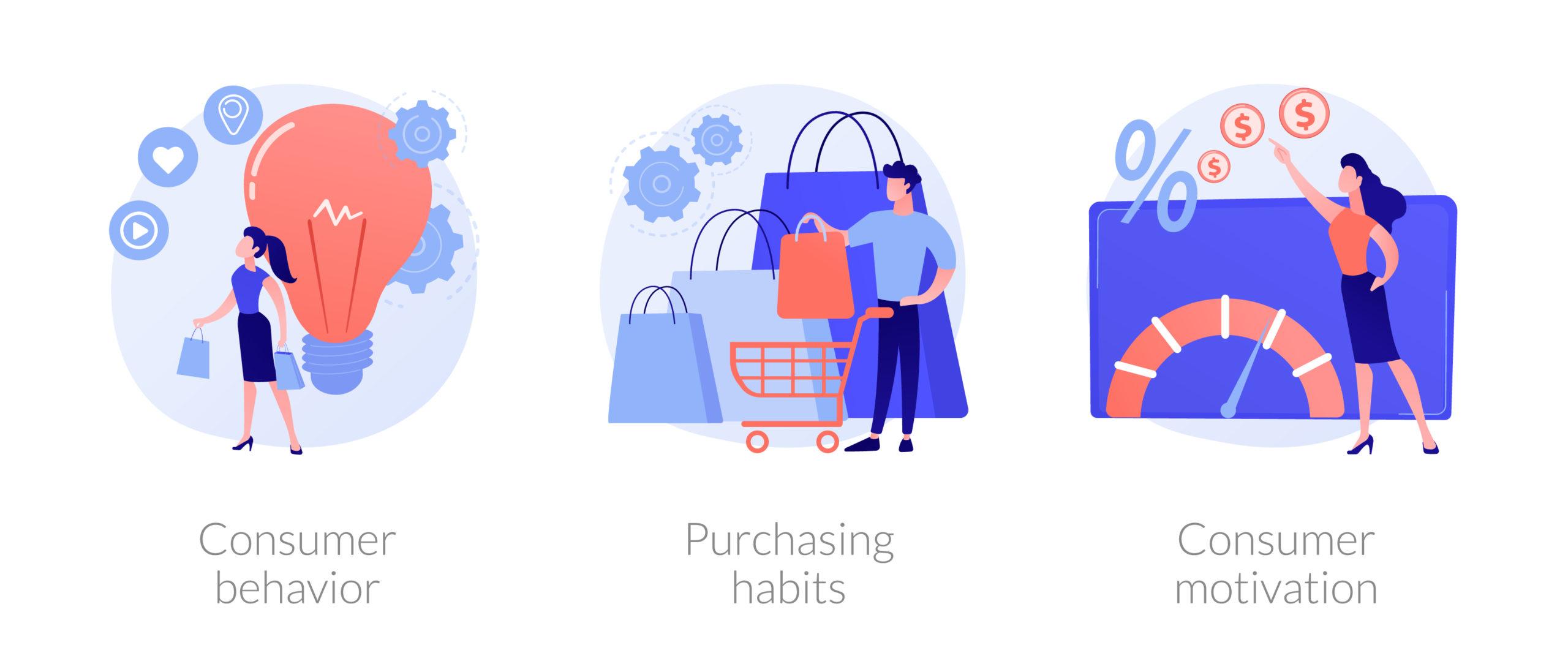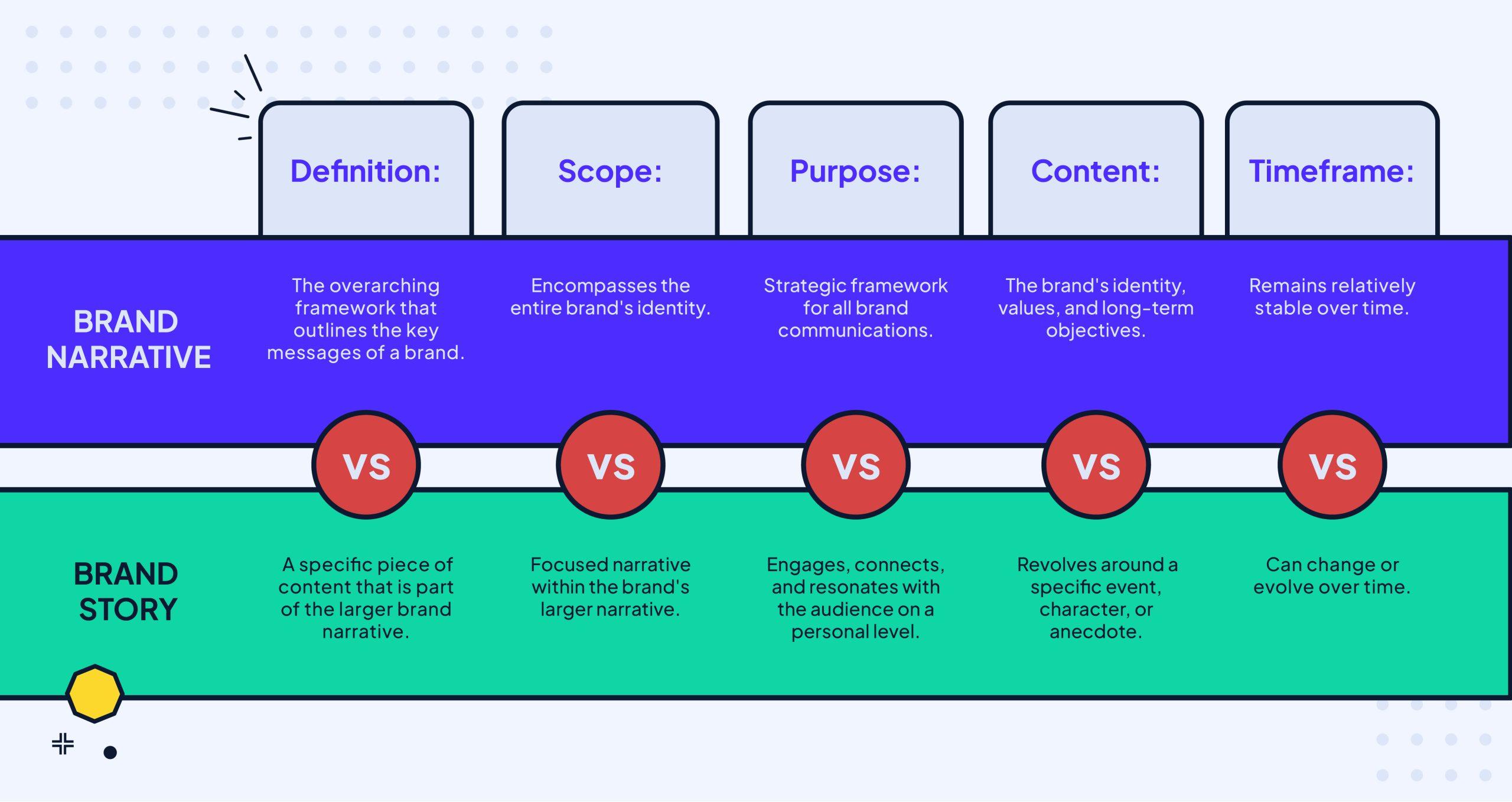In today’s digital landscape, businesses harness the power of search engines not just for visibility, but as vital research tools. By tapping into search data, companies can uncover trends, understand customer needs, and craft targeted marketing strategies that inspire and engage. Embrace the search revolution!
How Businesses Use Search Engines for Research and Marketing
In an era defined by digital connectivity, the power of search engines extends far beyond their primary function of delivering information. For businesses seeking to thrive in a competitive landscape, these tools have evolved into indispensable allies, transforming the way they conduct research and execute marketing strategies. Imagine harnessing the vast reservoir of data available at your fingertips to not only understand market trends but also anticipate customer needs and preferences. As organizations increasingly rely on search engines to unveil insights that drive innovation, they unlock new possibilities for growth and engagement. This article will delve into the myriad ways businesses are leveraging search engines, revealing how they can turn simple queries into strategic advantages. Join us on this journey to explore the transformative potential of search engines in shaping successful business practices and inspiring a future where informed decisions lead to extraordinary outcomes.
Understanding the Power of Search Engines in Business Strategy
Search engines have transformed the way businesses operate in today’s digital landscape. With billions of searches conducted every day, companies can harness the power of these platforms to gain invaluable insights into consumer behavior, competitor strategies, and market trends. By utilizing search engines effectively, businesses can streamline their research processes and enhance their marketing efforts.
One of the primary advantages of leveraging search engines is the ability to gather data on consumer preferences. Businesses can analyze search queries to understand what their target audience is interested in. This information can guide product development and help tailor offerings to meet specific needs. Some key benefits of utilizing search engines for research include:
- Trend Identification: Recognizing emerging trends can give businesses a competitive edge.
- Consumer Insights: Understanding customer pain points allows for better product alignment.
- Competitor Analysis: Evaluating competitors’ keywords and strategies helps optimize one’s own approach.
Moreover, search engines are a pivotal component in executing effective marketing strategies. With the right optimization tactics, businesses can increase their visibility and drive traffic to their websites. Search Engine Optimization (SEO) is crucial for ensuring that content ranks higher in search results, leading to greater reach and engagement. Key elements to consider include:
- Keyword Research: Finding the right keywords helps target the right audience.
- Content Quality: High-quality, relevant content is essential for retaining visitor interest.
- Backlinking: Establishing credible backlinks enhances authority and search ranking.
Furthermore, businesses can utilize pay-per-click (PPC) advertising to amplify their reach immediately. This model allows companies to bid on specific keywords, placing their ads at the top of search results. The benefits of PPC include:
- Immediate Visibility: Instant traffic can be generated from targeted ads.
- Budget Control: Businesses can set a clear budget and adjust as necessary.
- Targeted Demographics: Ads can be customized to reach specific audiences based on various criteria.
| Strategy | Benefit |
|---|---|
| SEO | Long-term organic traffic growth |
| PPC | Rapid visibility and lead generation |
| Content Marketing | Establishes authority and builds trust |
Ultimately, businesses that master the art of using search engines as a strategic tool are more likely to succeed in their endeavors. By embracing data-driven decision-making, optimizing their online presence, and staying attuned to their target market’s needs, organizations can not only survive but thrive in a competitive environment. The integration of search engine insights into business strategy is not just a trend; it is a necessity for those aspiring to lead in their respective industries.
Harnessing Search Engine Data for Market Insights
In today’s digital landscape, the ability to understand market trends and consumer behavior has never been more critical. Businesses are leveraging search engine data to gain invaluable insights that can inform their strategies and drive growth. By analyzing search queries, companies can uncover what their target audience is truly interested in, allowing them to tailor their offerings accordingly.
Search engines serve as a treasure trove of information. Here are several ways businesses can harness this data:
- Identifying Trends: Search volume for specific keywords can reveal emerging trends within an industry. By monitoring these patterns, businesses can pivot their marketing strategies to align with consumer interests.
- Understanding Consumer Needs: The types of questions people are asking in search engines can highlight pain points and needs. This insight allows companies to refine their products or services to better satisfy their customers.
- Competitor Analysis: Analyzing competitors’ visibility and keyword strategies can provide benchmarks for performance. Understanding where competitors excel can illuminate gaps that a business can exploit.
- Content Creation: Keyword research informs content marketing strategies. By producing content that answers popular search queries, businesses can attract organic traffic and establish authority in their niche.
Moreover, businesses can utilize tools like Google Trends and keyword planners to visualize search interest over time. This kind of analysis can be broken down by region or demographic, offering a more granular understanding of market dynamics. For instance, the following table illustrates some sample keyword trends over a quarter:
| Keyword | January | February | March |
|---|---|---|---|
| Sustainable Products | 1,200 | 1,500 | 1,800 |
| Remote Work Tools | 900 | 1,100 | 1,400 |
| Online Learning Platforms | 800 | 1,300 | 1,500 |
Data-driven decisions can set businesses apart from the competition. By consistently analyzing search engine data, companies can not only respond to current demands but also anticipate future needs. This proactive approach results in higher customer satisfaction and loyalty, ultimately leading to increased revenue.
Lastly, businesses should not overlook the importance of local SEO. Understanding localized search trends can enhance a company’s visibility in specific geographic areas, making it easier to connect with local customers. By optimizing content with locally relevant keywords, companies can tap into the growing market of consumers searching for nearby solutions.

Optimizing Your Online Presence for Maximum Visibility
In today’s digital landscape, establishing a robust online presence is crucial for any business aiming to thrive. Your visibility on search engines is not just about ranking high; it’s about creating a meaningful connection with your audience. To achieve this, businesses must harness the power of search engines effectively.
Here are some fundamental strategies that can help elevate your online visibility:
- Keyword Optimization: Conduct thorough keyword research to identify the terms your potential customers are searching for. Utilize these keywords naturally in your content, meta tags, and URLs.
- Quality Content Creation: Produce high-quality, engaging content that addresses the needs and interests of your audience. This not only improves your search ranking but also fosters trust and loyalty.
- Responsive Web Design: Ensure your website is mobile-friendly and accessible on various devices. A seamless user experience can significantly impact your search engine rankings.
- Link Building: Develop a strong backlink profile by acquiring links from reputable sites in your industry. This boosts your site’s authority and improves your standing in search results.
Additionally, utilizing local SEO strategies can be a game changer for businesses looking to attract nearby customers. By optimizing your Google My Business profile and encouraging customer reviews, you enhance your visibility in local search results. Consider these tactics:
- Local Keywords: Incorporate location-based keywords throughout your content.
- Customer Reviews: Actively solicit and respond to reviews to build credibility and improve local rankings.
- Local Listings: Ensure your business is listed accurately across various online directories.
| Strategy | Benefits |
|---|---|
| Keyword Optimization | Improves relevance and visibility in search results |
| Quality Content Creation | Engages audience and builds trust |
| Responsive Web Design | Enhances user experience across devices |
| Link Building | Increases site authority and ranking |
don’t underestimate the power of social media in amplifying your online presence. By sharing your content across platforms, you can reach a broader audience and drive traffic back to your site. Consistent engagement with your followers can also lead to increased shares, further enhancing your visibility.
By adopting these strategies, businesses can optimize their online presence and ensure maximum visibility in an ever-competitive digital space. Remember, every click on your link is an opportunity to connect with a potential customer, so make it count!

The Role of SEO in Driving Targeted Traffic
In the digital landscape, the importance of optimizing your online presence cannot be overstated. Search Engine Optimization (SEO) acts as a bridge between businesses and potential customers. By leveraging the power of SEO, companies can enhance their visibility on search engines, ensuring they appear in front of the right audience at the right time.
Businesses can implement various SEO strategies to attract targeted traffic, including:
- Keyword Research: Identifying the terms and phrases that potential customers use when searching for products or services is crucial. This step helps businesses tailor their content to align with user intent.
- On-Page Optimization: This involves optimizing individual web pages to rank higher and earn more relevant traffic. Elements like meta tags, headers, and content structure are key components.
- Quality Content Creation: Providing informative, engaging, and valuable content not only attracts visitors but also establishes authority in the field. High-quality content is more likely to be shared and linked back to.
- Link Building: Earning backlinks from reputable sites enhances credibility. Quality links signal to search engines that your content is trustworthy and worth ranking higher.
Moreover, local SEO is becoming increasingly vital for businesses with a physical presence. By optimizing for local searches, companies can connect with customers in their area. This includes:
- Google My Business: Claiming and optimizing your listing can significantly boost local visibility.
- Localized Content: Creating content that resonates with your local audience can improve engagement and relevance.
To illustrate the impact of SEO on traffic generation, consider the following comparison of traffic sources:
| Traffic Source | Estimated Traffic Percentage |
|---|---|
| Organic Search | 53% |
| PPC Advertising | 27% |
| Social Media | 15% |
| Direct Traffic | 5% |
As illustrated, a substantial portion of traffic can be attributed to organic search, highlighting the necessity for effective SEO strategies. In an era where consumers increasingly rely on search engines for information and solutions, businesses that prioritize SEO not only drive targeted traffic but also cultivate trust and credibility.
Ultimately, the role of SEO transcends mere visibility; it is about establishing a connection with an audience eager for what you offer. By investing in SEO, businesses set themselves on a path to sustainable growth, positioning themselves as leaders in their respective markets.
Leveraging Paid Search for Immediate Impact
In today’s fast-paced digital landscape, businesses are seeking ways to gain an edge, and paid search advertising stands out as a powerful tool for achieving swift results. By investing in paid search, companies can position their brand prominently on search engine results pages (SERPs), ensuring visibility at critical moments when potential customers are actively seeking solutions.
The beauty of paid search lies in its immediacy. Unlike organic search efforts that can take months to yield results, paid campaigns can drive traffic almost instantaneously. This is particularly beneficial for businesses looking to:
- Launch New Products: Create buzz and attract customers from day one.
- Clear Excess Inventory: Promote sales and discounts to move products quickly.
- Capture Seasonal Opportunities: Take advantage of trends and holidays through targeted ads.
Effective paid search campaigns leverage strategic keyword targeting, ensuring that ads reach the intended audience. By analyzing search intent, businesses can tailor their ads to address specific customer needs, enhancing the likelihood of conversion. Consider the following approach:
| Keyword Type | Purpose | Example |
|---|---|---|
| Branded Keywords | Increase visibility for established brands | “Nike running shoes” |
| Generic Keywords | Capture broad search interest | “running shoes” |
| Long-Tail Keywords | Target specific needs | “best running shoes for flat feet” |
Moreover, the ability to dynamically adjust bids and budgets in real time allows businesses to optimize their campaigns based on performance metrics. By analyzing click-through rates (CTR) and conversion rates, companies can allocate their resources more effectively, ensuring that every dollar spent contributes to their growth.
Another compelling advantage of paid search is the wealth of data it generates. Companies can gain insights into customer behavior, preferences, and demographics, which can inform not only marketing strategies but also product development. This data-driven approach facilitates a deeper understanding of the market landscape, allowing businesses to stay ahead of the competition.
Ultimately, leveraging paid search isn’t just about securing immediate visibility; it’s about creating a strategic foundation for long-term success. By integrating paid search into a broader marketing strategy, businesses can enjoy the benefits of both immediate traffic and valuable insights, propelling them towards their goals with confidence and clarity.

Content Marketing: Building Trust Through Valuable Information
In today’s digital landscape, businesses have come to understand that the key to capturing audience attention lies in delivering valuable information. By leveraging search engines effectively, companies can position themselves as trusted authorities in their industry. This involves more than just traditional marketing tactics; it requires a commitment to educating and informing potential customers.
When businesses utilize search engines for research, they tap into a vast repository of knowledge that can inform their content strategies. Here are some common methods they employ:
- Keyword Research: Identifying what terms and phrases potential customers are searching for helps businesses tailor their content to meet those needs.
- Competitor Analysis: Observing what competitors are doing can unveil gaps in the market and inspire unique content ideas.
- Trend Monitoring: Keeping an eye on trending topics allows businesses to stay relevant and engage with their audience on timely issues.
By producing content that answers questions and solves problems, businesses foster a sense of trust and credibility with their audience. This is not only beneficial for brand loyalty but also enhances customer engagement. When audiences view a brand as a resource for valuable information, they are more likely to return and convert into loyal customers.
To illustrate how effective content marketing can be in building trust, consider the following table that showcases successful strategies:
| Strategy | Description | Impact |
|---|---|---|
| Blogging | Create informative articles that address common questions. | Establish authority, improve SEO. |
| Webinars | Host live sessions on relevant topics. | Engages audience, allows for real-time interaction. |
| Infographics | Visual representation of complex information. | Enhances shareability, captures attention. |
Moreover, businesses can enhance their trustworthiness by ensuring their content is not only informative but also transparent. Sharing behind-the-scenes stories, customer testimonials, and case studies can humanize a brand, making it more relatable and trustworthy. This transparency builds a loyal community that appreciates authenticity.
Ultimately, the goal of using search engines for research and marketing extends beyond mere sales. It is about creating an ecosystem where customers feel informed, valued, and confident in their decisions. By continually providing valuable information, businesses can cultivate trust and loyalty that stands the test of time.

Analyzing Competitor Strategies for a Competitive Edge
In the fast-paced world of digital marketing, understanding the strategies employed by competitors can unlock valuable insights and provide a significant advantage. By leveraging search engines effectively, businesses can dissect their competitors’ tactics, refine their own strategies, and ultimately enhance their market positioning.
One of the most effective methods for analyzing competitor strategies is through keyword analysis. By identifying the keywords that competitors are ranking for, businesses can:
- Discover new content opportunities
- Understand their audience’s search intent
- Identify gaps in their own content strategy
Tools like SEMrush and Ahrefs make this process seamless, allowing companies to see which keywords drive traffic to their competitors’ sites and how they can optimize their own content to capture similar audiences.
Another powerful tactic is monitoring backlink profiles. Analyzing where competitors are getting their links from can reveal:
- Potential partnership opportunities
- Content types that resonate with audiences
- Influencers and publications to target for outreach
By understanding the sources of competitors’ backlinks, businesses can craft a more effective link-building strategy that not only increases authority but also drives targeted traffic.
Social media is also a goldmine for competitive analysis. Observing how competitors engage with their audience can provide insights into:
- Successful content formats and topics
- Timing and frequency of posts
- Engagement strategies that resonate with the target demographic
Tools like BuzzSumo can help businesses track which of their competitors’ posts generate the most engagement, allowing them to refine their own content strategies and foster a more vibrant online community.
| Competitor | Top Keyword | Backlink Source | Social Engagement |
|---|---|---|---|
| Competitor A | Best SEO Tools | Tech Blog | 500 Likes |
| Competitor B | Digital Marketing Trends | Marketing Magazine | 300 Shares |
| Competitor C | Content Marketing Strategies | Influencer Site | 200 Comments |
By synthesizing this information, businesses can craft a multi-faceted marketing strategy that not only competes but thrives in the digital landscape. Understanding competitor strategies is not merely an exercise in observation; it’s a pathway to innovation, allowing businesses to differentiate themselves and surpass the competition.

Using Consumer Behavior Data to Tailor Your Offerings
In today’s fast-paced market, understanding your audience is not just an advantage; it’s a necessity. Businesses are harnessing the power of consumer behavior data to create offerings that resonate deeply with their target demographic. By leveraging insights drawn from search engine queries, companies can refine their products and services to meet evolving consumer demands.
One effective approach is analyzing the search terms that potential customers are using. This data provides valuable insights into their interests and pain points. By identifying these key phrases, businesses can:
- Develop products that solve specific customer problems.
- Tailor marketing messages to align with consumer needs and preferences.
- Predict future trends based on emerging search patterns.
Additionally, segmenting consumer behavior data allows for personalized marketing strategies. By understanding different customer profiles, businesses can create targeted campaigns that speak directly to each segment. For example, a company might discover that younger consumers prioritize sustainability. Armed with this knowledge, they can emphasize eco-friendly materials in their advertising and product design.
Moreover, the use of analytics tools enables businesses to track the effectiveness of their strategies continuously. By measuring how different demographics respond to various offerings, companies can iterate and adjust their approach in real-time. This dynamic adjustment fosters a culture of responsiveness and innovation, ensuring that businesses remain at the forefront of consumer preferences.
To illustrate the effectiveness of tailored offerings, consider the following table showcasing how different industries use consumer behavior data:
| Industry | Data Utilization | Outcome |
|---|---|---|
| Retail | Analyzing purchase patterns and search queries | Customized product recommendations |
| Travel | Monitoring seasonal travel trends | Targeted seasonal promotions |
| Food & Beverage | Examining dietary preferences and trends | Creation of niche products (e.g., vegan snacks) |
Ultimately, the ability to adapt offerings based on consumer behavior data not only enhances customer satisfaction but also drives brand loyalty. When consumers feel understood and valued, they are more likely to return and recommend your business to others. By investing in research and continuously refining your offerings, you position your brand as a market leader and a trusted partner for your customers.

Creating an Engaging User Experience for Higher Conversion Rates
In today’s digital landscape, where competition is fierce and attention spans are short, creating an engaging user experience is paramount for businesses aiming to maximize their conversion rates. A website that captivates visitors not only keeps them on the page longer but also encourages them to take desired actions, such as signing up for newsletters, downloading resources, or making purchases.
To achieve this, it’s essential to focus on several key elements:
- Intuitive Navigation: Users should be able to find what they are looking for without hassle. A clear, logical structure helps guide them through the site seamlessly.
- Compelling Visuals: High-quality images, videos, and graphics can engage visitors and convey messages more effectively than text alone. An eye-catching design can draw users in.
- Responsive Design: With the increasing use of mobile devices, ensuring that your website is mobile-friendly is critical. A responsive design adapts to various screen sizes, providing a consistent experience for all users.
- Fast Load Times: Slow loading pages lead to high bounce rates. Optimizing your site’s performance is essential to keep visitors engaged.
Furthermore, integrating strategic calls-to-action (CTAs) throughout the site can significantly enhance user experience and drive conversions. These CTAs should be:
- Clear and Actionable: Use concise language that motivates users to act, such as “Sign Up Now” or “Get Your Free Trial.”
- Visibly Placed: Ensure CTAs are positioned where users expect to find them, such as after compelling content or above the fold.
Incorporating user feedback is also crucial for continuous improvement. Regularly gathering insights through surveys, usability testing, and analytics can provide valuable data on user behavior and preferences. This iterative approach allows businesses to refine the user experience, ultimately leading to higher conversion rates.
| Element | Impact on User Experience |
|---|---|
| Intuitive Navigation | Increases user retention and satisfaction. |
| Compelling Visuals | Enhances engagement and message retention. |
| Responsive Design | Improves accessibility and usability across devices. |
| Fast Load Times | Reduces bounce rates and keeps users on the site. |
By prioritizing an engaging user experience, businesses can not only foster loyalty and trust among their users but also translate that engagement into measurable conversion rates. As the digital marketing landscape continues to evolve, those who adapt and innovate their user experiences will undoubtedly lead the way in attracting and retaining customers.

The Importance of Local SEO for Community Engagement
Local SEO is not just a buzzword; it is a vital tool for businesses aiming to foster community ties and enhance engagement with local customers. By optimizing their online presence for local search results, businesses can ensure they are easily discoverable by those within their vicinity who are actively seeking their products or services.
Here are some key ways local SEO can boost community engagement:
- Increased Visibility: When businesses optimize their websites for local search terms, they appear prominently in search results, making it easier for community members to find them.
- Enhanced Customer Trust: Local SEO often includes optimizing for Google My Business, which allows businesses to showcase their credibility through customer reviews, ratings, and accurate location information.
- Targeted Marketing: Businesses can tailor their marketing strategies to meet the needs of local consumers, ensuring products and services resonate with the community’s preferences.
- Community Engagement Opportunities: By appearing in local searches, businesses have the chance to get involved in community events, sponsorships, and local partnerships that can enhance brand loyalty.
Moreover, utilizing local SEO can significantly impact foot traffic to brick-and-mortar locations. When potential customers search for businesses nearby, they are often motivated to visit. Implementing strategies such as local keywords, location pages, and targeted content can drive more visitors to a physical store, creating a direct link between online searches and in-person engagement.
It’s also important for businesses to actively engage with their audience through social media platforms and other online channels. By sharing valuable content, responding to customer inquiries, and showcasing local involvement, businesses can cultivate a community around their brand. This not only enhances visibility but also builds a loyal customer base that feels connected to the business.
| Local SEO Benefits | Impact on Community |
|---|---|
| Improved Online Visibility | Increased foot traffic and sales |
| Better Local Listings | Enhanced brand credibility |
| Targeted Advertising | Stronger community ties |
| Increased Customer Engagement | Higher customer retention rates |
Ultimately, local SEO is a powerful strategy that not only enhances a business’s online presence but also fosters deeper connections within the local community. By prioritizing local optimization, businesses can play an integral role in their neighborhoods, driving engagement and building lasting relationships with their customers.

Utilizing Search Analytics to Measure Your Success
In the digital age, businesses are tapping into search analytics as a powerful tool to gauge their marketing effectiveness and overall success. By understanding how users interact with search engines, companies can tailor their strategies to meet the evolving needs of their audience.
Search analytics enables businesses to:
- Identify Popular Keywords: Tracking which keywords drive traffic allows companies to optimize their content for maximum visibility.
- Analyze User Intent: Understanding what users are looking for helps in crafting targeted content that resonates with their needs.
- Measure Conversion Rates: By linking search queries to sales data, businesses can directly assess the effectiveness of their marketing campaigns.
Implementing search analytics tools can provide insightful data, which can be leveraged to enhance marketing strategies. For instance, businesses can utilize:
- Google Analytics: A comprehensive tool for tracking website performance and user behavior.
- SEMrush: An SEO platform that provides keyword analysis and traffic insights.
- Ahrefs: A robust tool for backlink analysis and keyword rankings.
By synthesizing this data, businesses can create a dynamic marketing strategy that continually adapts to search trends. The following table exemplifies how different metrics can inform decision-making:
| Metric | Significance | Actionable Insight |
|---|---|---|
| Clicks | Indicates interest in content | Optimize headlines and meta descriptions |
| Bounce Rate | Reflects content relevance | Enhance content quality and user engagement |
| Conversion Rate | Measures success of marketing efforts | Refine CTAs and landing pages |
Ultimately, embracing search analytics not only measures success but drives continuous improvement. By actively monitoring and adjusting based on data insights, businesses can foster a stronger connection with their audience, leading to sustained growth and success.

Building a Brand Narrative Through Search-Driven Marketing
In today’s digital landscape, businesses are leveraging search-driven marketing to craft compelling brand narratives that resonate with their target audience. By understanding the intricacies of search behavior, companies can not only enhance visibility but also weave a story that captures the essence of their brand. This narrative goes beyond mere product promotion; it encapsulates the values, mission, and identity of a business, creating a deeper connection with potential customers.
To build an effective brand narrative through search-driven marketing, consider the following strategies:
- Keyword Research: Understanding the language your audience uses in search queries can guide your content creation. Identifying high-volume keywords related to your industry allows you to align your narrative with the interests and needs of your audience.
- Content Creation: Crafting engaging content that addresses these keywords helps establish your brand as an authority in your field. Through blog posts, articles, and multimedia, you can tell stories that resonate and inspire.
- SEO Optimization: Implementing on-page and off-page SEO techniques ensures that your content is easily discoverable. This involves optimizing your website structure, using backlinks, and enhancing site speed, all contributing to a seamless user experience.
- Social Proof: Incorporating testimonials and case studies into your narrative reinforces your brand’s credibility. When potential customers see real-life examples of your impact, they are more likely to trust and engage with your business.
Moreover, incorporating visual storytelling alongside your written content amplifies your brand narrative. Infographics, videos, and images can convey messages quickly and effectively, making your brand more relatable and memorable. The combination of visuals with optimized content not only grabs attention but also encourages sharing, further extending your reach.
| Brand Narrative Element | Search-Driven Strategy |
|---|---|
| Mission Statement | Use SEO-optimized blog posts to convey your core values. |
| Customer Stories | Create video testimonials and share them on social media. |
| Brand Voice | Maintain consistency in your content across all platforms. |
As brands integrate their narratives into their marketing strategies, they discover the power of storytelling in fostering customer loyalty. When consumers feel emotionally connected to a brand’s story, they are more inclined to become repeat customers, advocates, and partners. By focusing on the narrative element in search-driven marketing, businesses can create a lasting impression that transcends traditional advertising methods.

Future-Proofing Your Business with Voice Search Optimization
As technology evolves, the landscape of search engines is shifting dramatically, with voice search emerging as a pivotal component. To remain competitive, businesses must adapt by integrating voice search optimization into their digital strategy. This transformation is not merely about keeping up; it’s about embracing an opportunity to connect with customers in a more intuitive and user-friendly way.
People increasingly prefer voice commands for their search queries. This shift means that businesses must rethink their approach to SEO. Here are several strategies to consider:
- Natural Language Keywords: Focus on conversational phrases that users are likely to speak rather than type. This includes long-tail keywords that mimic how people talk.
- Local SEO: Many voice searches are location-based. Optimize your listings and content for local searches to capture nearby customers looking for your products or services.
- Structured Data: Implement schema markup to help search engines understand your content better. This can enhance the chances of your business being featured in voice search results.
- Fast Loading Times: Voice search users expect immediate answers. Ensure your website is optimized for speed to enhance user experience and meet their expectations.
Adopting these strategies not only positions your brand for better visibility but also fosters a more engaging customer experience. With voice search, the way consumers seek information is evolving, and so must your marketing tactics. Here’s how voice search can specifically benefit businesses:
| Benefit | Description |
|---|---|
| Increased Engagement | Voice search encourages interaction, allowing for more dynamic conversations with potential customers. |
| Enhanced Customer Insights | Understanding voice search queries can provide valuable data on customer preferences and behavior. |
| Competitive Advantage | Being an early adopter of voice search optimization can set your business apart from competitors. |
Moreover, as artificial intelligence and machine learning continue to advance, the way voice search understands and processes queries will improve. This means businesses that prioritize voice search optimization will benefit from a continually evolving technological landscape. Prepare your brand for the future by adopting these practices today. By doing so, you can ensure that your business remains relevant, competitive, and aligned with the preferences of a new generation of consumers.

Embracing Continuous Learning to Stay Ahead in Search Trends
In the ever-evolving landscape of search engine optimization and digital marketing, the ability to adapt and learn continuously is paramount for businesses striving to remain competitive. As search trends shift and consumer behaviors evolve, organizations that commit to understanding these changes can effectively harness them to drive their research and marketing efforts.
Businesses should consider the following strategies to enhance their learning processes:
- Stay Updated with Industry News: Subscribe to leading marketing blogs, newsletters, and podcasts to keep abreast of the latest search trends and algorithm updates.
- Leverage Analytics: Utilize tools like Google Analytics to analyze user behavior and search patterns, allowing for informed decision-making.
- Engage in Online Courses: Platforms like Coursera and Udemy offer courses focused on SEO, content marketing, and digital strategy, equipping teams with the latest skills.
- Network with Peers: Join forums and social media groups where industry professionals share insights, experiences, and best practices.
Another effective approach is to implement a culture of experimentation within the organization. Testing new ideas, whether in content formats, keywords, or ad placements, can lead to unexpected discoveries that propel marketing strategies forward. Emphasizing a trial-and-error mindset not only fosters innovation but also encourages teams to embrace failures as opportunities for growth.
To quantify the impact of these learning initiatives, businesses can utilize a simple framework to track their progress over time:
| Learning Activity | Frequency | Impact Score (1-10) |
|---|---|---|
| Industry News Subscription | Weekly | 8 |
| Analytics Review | Monthly | 9 |
| Online Courses Completed | Quarterly | 7 |
| Networking Events Attended | Bi-Annually | 6 |
By continuously assessing their learning endeavors, organizations can pinpoint which activities yield the highest returns, allowing for a more strategic allocation of resources. This data-driven approach not only optimizes marketing efforts but also aligns them with current consumer needs and expectations.
Ultimately, the path to mastering search trends is paved with a commitment to lifelong learning. By remaining curious and proactive, businesses can not only stay ahead but also become leaders in their respective industries. In a world where search engines shape the way consumers discover and engage with brands, embracing continuous learning is no longer optional; it is essential for success.
Frequently Asked Questions (FAQ)
Q&A: How Businesses Use Search Engines for Research and Marketing
Q1: Why are search engines essential for businesses today?
A1: Search engines are the gateway to the digital world, offering businesses unparalleled access to a wealth of information and potential customers. By harnessing the power of search engines, companies can conduct thorough market research, understand consumer behavior, and identify industry trends. This insight not only informs strategic decisions but also helps businesses stay ahead of the competition. Embracing search engines is not just beneficial; it’s essential for survival in today’s fast-paced market.
Q2: How do businesses utilize search engines for market research?
A2: Businesses leverage search engines to gather valuable data about their target audiences, competitor strategies, and market conditions. By using specific keywords, they can analyze search trends and uncover insights about what customers are looking for. Tools like Google Trends and keyword planners allow companies to refine their offerings based on real-time consumer interests, enabling them to tailor their products and services to meet demand effectively. This proactive approach to research empowers businesses to make informed decisions that resonate with their audience.
Q3: Can you provide examples of effective search engine marketing strategies?
A3: Absolutely! One powerful strategy is Search Engine Optimization (SEO), which involves optimizing website content to rank higher in search results. Businesses that invest in SEO attract organic traffic, which is often more engaged and likely to convert. Another strategy is pay-per-click advertising (PPC), where companies bid on keywords to display ads prominently on search engine results pages. This immediate visibility can significantly increase brand awareness and drive sales. By combining these strategies, businesses can maximize their reach and impact, turning search engines into powerful marketing allies.
Q4: How can small businesses compete with larger companies using search engines?
A4: Small businesses can effectively compete by focusing on niche markets and local SEO strategies. By optimizing their online presence for specific keywords that reflect their unique offerings, they can attract targeted traffic. Additionally, leveraging social proof—through customer reviews and testimonials—can enhance credibility and build trust with potential customers. Search engines also allow small businesses to showcase their personality and values, which can create a strong emotional connection with the audience. When small businesses harness the power of search engines creatively, they can compete head-to-head with larger corporations.
Q5: What are the common mistakes businesses make when using search engines for marketing?
A5: One of the most common mistakes is neglecting SEO best practices, such as keyword optimization and quality content creation. Businesses often underestimate the importance of user experience, which can significantly impact search rankings. Additionally, a lack of consistency in updating and maintaining their online presence can lead to missed opportunities. Lastly, many businesses fail to track and analyze their performance metrics. By regularly assessing their strategies, they can adapt and improve their efforts, ensuring they remain relevant and effective in their marketing endeavors.
Q6: What is the future of search engines in business research and marketing?
A6: The future of search engines in business research and marketing looks incredibly promising! With advancements in artificial intelligence and machine learning, search engines will become even more sophisticated, offering personalized search results and predictive analytics. Businesses that embrace these technologies will be able to anticipate customer needs and adapt their strategies accordingly. Moreover, voice search and mobile optimization will continue to grow, opening new avenues for engagement. The key is for businesses to remain agile and innovative, leveraging search engines as powerful tools to connect with their audience and drive their growth.
Q7: How can businesses take the first step toward optimizing their use of search engines?
A7: The first step is to educate themselves on the fundamentals of SEO and search engine marketing. This includes understanding their audience’s behavior and identifying the right keywords. Businesses can start by auditing their current online presence, ensuring their website is user-friendly and content-rich. Engaging with digital marketing professionals or utilizing online courses can also provide invaluable insights. By committing to a strategic approach and continuously learning, businesses can unlock the potential of search engines, paving the way for growth and success.
Embrace the digital age, harness the power of search engines, and transform your business potential into reality! The journey may require effort and innovation, but the rewards are limitless for those willing to make the leap.
Final Thoughts
the impact of search engines on business research and marketing cannot be overstated. As we’ve explored, these powerful tools not only provide invaluable insights into consumer behavior and market trends but also empower businesses to connect authentically with their target audiences. By leveraging the vast wealth of information available online, companies can make data-driven decisions, craft compelling marketing strategies, and ultimately drive growth in today’s competitive landscape.
As you reflect on how your own business can harness the potential of search engines, remember that the journey of innovation starts with curiosity and the willingness to adapt. Embrace the possibilities that search engines offer—be it through understanding your audience’s needs, identifying emerging trends, or optimizing your online presence. The digital age is here, and those who seize the opportunity to blend research with creativity will not only thrive but inspire others along the way.
So, take that next step. Dive into the world of search engines, explore their capabilities, and let them guide you toward a future filled with potential. The insights are there, waiting to be uncovered—your journey to success begins with a single search. Let your business harness the power of knowledge and creativity to not just meet the market’s demands but to shape its future.





